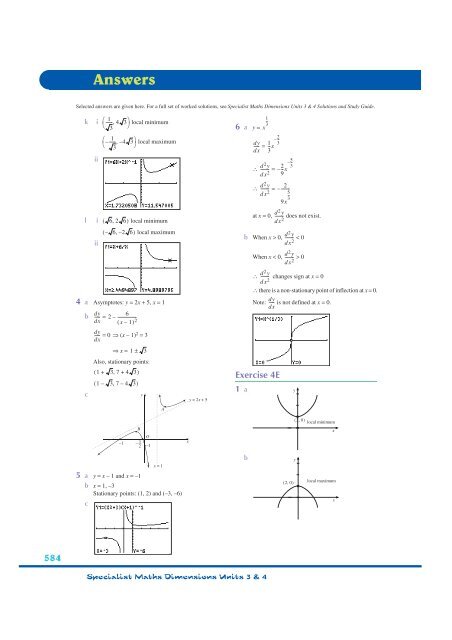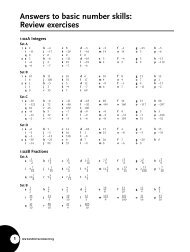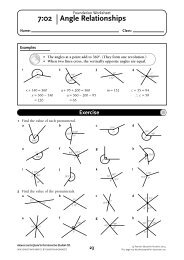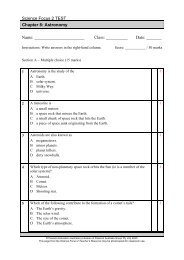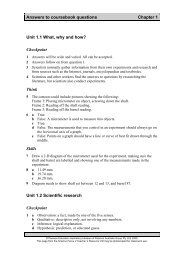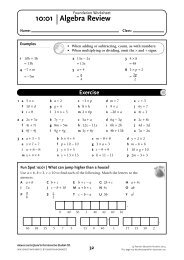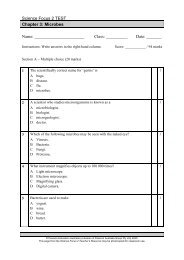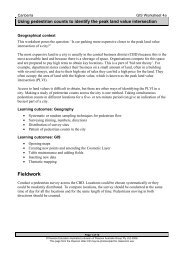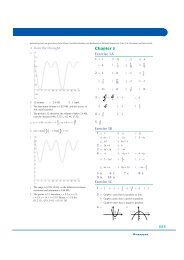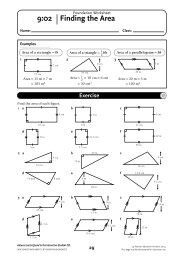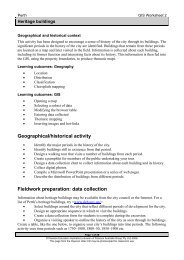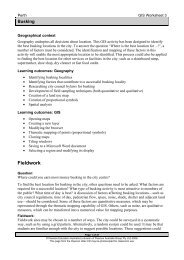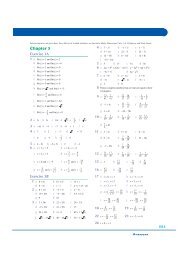575 Answers Chapter 4
575 Answers Chapter 4
575 Answers Chapter 4
Create successful ePaper yourself
Turn your PDF publications into a flip-book with our unique Google optimized e-Paper software.
<strong>Answers</strong>Selected answers are given here. For a full set of worked solutions, see Specialist Maths Dimensions Units 3 & 4 Solutions and Study Guide.k i ⎛ 1------ , 4 3⎞local minimum⎝3⎠ii⎛ 1–------ , – 4 3⎞local maximum⎝3⎠l i ( 6,2 6)local minimum(–6,– 2 6)local maximumii4 a Asymptotes: y = 2x + 5, x = 1dyb -----6= 2 – ------------------dx ( x – 1) 2dy----- = 0 ⇒ (x – 1) 2 = 3dx⇒ x = 1 ± 3Also, stationary points:c( 1+ 3,7+4 3)( 1– 3,7–4 3)yAy = 2x + 56 a y = xd∴ 2 5–--y 2 3-------- =dx 2 –--x9d∴ 2 y--------2=dx 2 –--------5--39xat x = 0,does not exist.db When x > 0, 2 y-------- < 0dx 2dWhen x < 0, 2 y-------- > 0dx 2d∴ 2 y-------- changes sign at x = 0dx 2∴ there is a non-stationary point of inflection at x = 0.dyNote: ----- is not defined at x = 0.dxExercise 4E1 ady-----dx1--3–--231= --x3d 2 y--------dx 2y20 ,–1B– 12O–1xxx = 1by5 a y = x – 1 and x = –1b x = 1, –3Stationary points: (1, 2) and (–3, –6)( 20 , )( ) local minimumxlocal maximumc584Specialist Maths Dimensions Units 3 & 4


